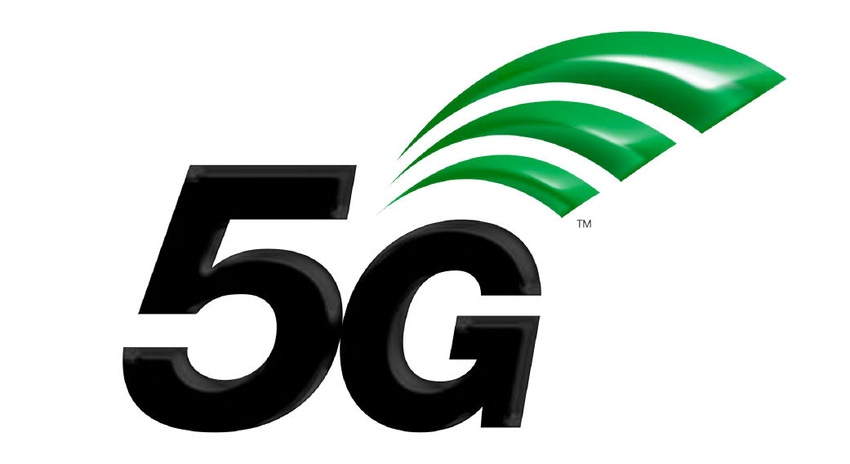What to expect from 5G Advanced, both in terms of technologies and use-cases
5G Advanced can be understood as the evolution of 5G, or as an extension and enhancement of the three standard ITU usage scenarios recommended for IMT 2020 and beyond.
June 1, 2021

Telecoms.com periodically invites expert third parties to share their views on the industry’s most pressing issues. In this piece Ray Williamson, Director of European Product Management, Huawei Wireless, takes a look at what could also be called 5.5G.
What is 5G Advanced?
5G is pushing the boundaries not only of our mobile communications systems but also of the underlying science and technology. 5G Advanced can be understood as the evolution of 5G, or as an extension and enhancement of the three standard ITU usage scenarios recommended for IMT 2020 and beyond.
Taking a look back at the evolution from 2G to 5G, the potential of 5G Advanced for the 5G industry becomes clear. It has taken about ten years for the step between each generation– such as the evolution to 4G back in 2010 and 5G around 2020. Preliminary work on 6G is now underway, and it is expected to reach the market around 2030. However, neither the need for technology evolution nor the demand for service innovation are standing still during these 10-year cycles; 3G, for instance, evolved to HSPA+ and the introduction of the smartphone. This is where 5G Advanced comes in: In a world that is becoming more and more intelligently connected ahead of 2030, continuous evolution of 5G technology is necessary to fully unleash the potential of this technology and to accelerate the progress of the 5G industry.
If we think of 5G as the Internet of Everything that enables the device-based Internet of Things and human input elements to connect with each other, then 5G Advanced can be understood as the Intelligent Internet of Things which will allow us to build a fully interconnected world.
The technology behind 5G Advanced and how it works
To understand how 5G Advanced can intelligently transform 5G, it helps to think of the IMT 2020 triangle, consisting of three usage scenarios – enhanced Mobile Broadband (eMBB), ultra-reliable low-latency communication (URLLC), and massive machine-type communications (mMTC). Without question, via these three scenarios, 5G is already enabling consumers and businesses to access more advanced applications and allowing more and more devices to connect and exchange data faster than ever before.
But in an increasingly connected world, a continuous rise in connections requires technology to evolve whilst we move towards 6G.
Three areas of technology evolution can be considered key for 5G Advanced to fully address emerging service needs for both consumers and verticals. UCBC (Uplink Centric Broadband Communications), will greatly improve uplink performance enabling verticals to leverage new technologies like machine vision, and RTBC (real-time broadband communications) will deliver ultra-wide bandwidth and high reliability which will be used in areas such as holographic communications. Finally, there is HCS (harmonised communication and sensing), which will be used in connected cars, drones and industrial applications, due to its ultra-liable, low latency connectivity and high location accuracy.
The evolution that will allow us to keep up with the service demand for innovation, then, is 5G Advanced. By adding three additional scenarios – UCBC, RTBC and HCS – the triangle transforms into a hexagon. Compared to 5G, 5G Advanced enables mobile networks to perform tasks which are far greater in scale, performance and reliability than those possible under 5G, whilst ensuring that networks remain secure and cost effective. In terms of the real-world impact, 5G Advanced would dramatically enhance uplink capabilities from 5Mbps to 1Gbps and reduce latency levels from 20ms to 5ms.
5G Advanced – areas of deployment
In the UK we are already seeing a number of city and regional councils with Smart City plans and engaging in 5G pilot projects. In between now and 2030, 5G will increasingly connect people with the virtual world and deliver vast amounts of real-time data across a city, which in turn can lead to much more dynamic operations, more efficient services, and greener cities. Whilst this is just one scenario highlighting how 5G will render our world more connected and intelligent, it shows that cellular networks will carry a significantly higher level of connections as the world becomes more connected by 5G. Currently, our cellular networks support around 1.3bn connections. For comparison, we will need to support 100bn connections by 2030.
As an evolution of 5G, 5G Advanced will enable more scenarios that will allow technology to keep up with a steadily increasing demand for service innovation. Under 5G Advanced, new technologies such as holographic applications can be realised. For technologies that are currently emerging such as self-driving cars, 5G Advanced could increase the safety of this technology drastically.
HCS will increase location accuracy to centimetre-level positioning and incorporate wide-area high-resolution sensing, whilst RTBC will make immersive experiences possible by delivering 10Gbps level throughput at ms-level latency.
The pandemic has highlighted how critical mobile connectivity has become to both social and professional communications. In the coming years, 5G therefore has to advance to a level that allows us to extend the ways in which we connect to others. Augmented reality and virtual reality, for example, will need to become more realistic and more immersive. At the same time, ensuring cost effectiveness and accessibility are crucial, which means that 5G evolution requires an improvement of data rates and latency to build a fully connected, intelligent world.
Realising the full potential of 5G in the coming years requires us to think ahead and address the limitations of 5G that will become evident as technological requirements increase now. Huawei has previously described wireless innovation as an “endless frontier” for limitless opportunities for innovation. As we continue the commercial rollout of 5G and become more connected, 5G Advanced allows us to explore the “frontier” and expand wireless capabilities beyond 5G. To fully yield the benefits of 5G and the new technologies that will emerge from it, technological innovation on the road to 6G must continue to evolve. With 5G Advanced, Huawei is therefore looking to go beyond what is possible right now in wireless innovation, and towards a world of an Intelligent Internet of Everything.
 Ray leads the team responsible for strategy and solution definition for wireless networks through to 5G and 5G-Advanced. The team also collaborates with vertical industry partners to demonstrate how these networks enable businesses to be more efficient and to create new services using technologies such as AR/VR. He has over twenty years of experience in the wireless communications field in Engineering and Business Development roles and has held leadership positions in Product Management. Ray joined Huawei in 2013 having previously worked at Motorola as Director of Global Product Management and at NSN as Head of Small Cell Business Development in Europe. He holds a BSC (Hons) in Telecommunications and a PGDBA (Finance).
Ray leads the team responsible for strategy and solution definition for wireless networks through to 5G and 5G-Advanced. The team also collaborates with vertical industry partners to demonstrate how these networks enable businesses to be more efficient and to create new services using technologies such as AR/VR. He has over twenty years of experience in the wireless communications field in Engineering and Business Development roles and has held leadership positions in Product Management. Ray joined Huawei in 2013 having previously worked at Motorola as Director of Global Product Management and at NSN as Head of Small Cell Business Development in Europe. He holds a BSC (Hons) in Telecommunications and a PGDBA (Finance).
Read more about:
DiscussionAbout the Author(s)
You May Also Like











_1.jpg?width=300&auto=webp&quality=80&disable=upscale)


.png?width=800&auto=webp&quality=80&disable=upscale)